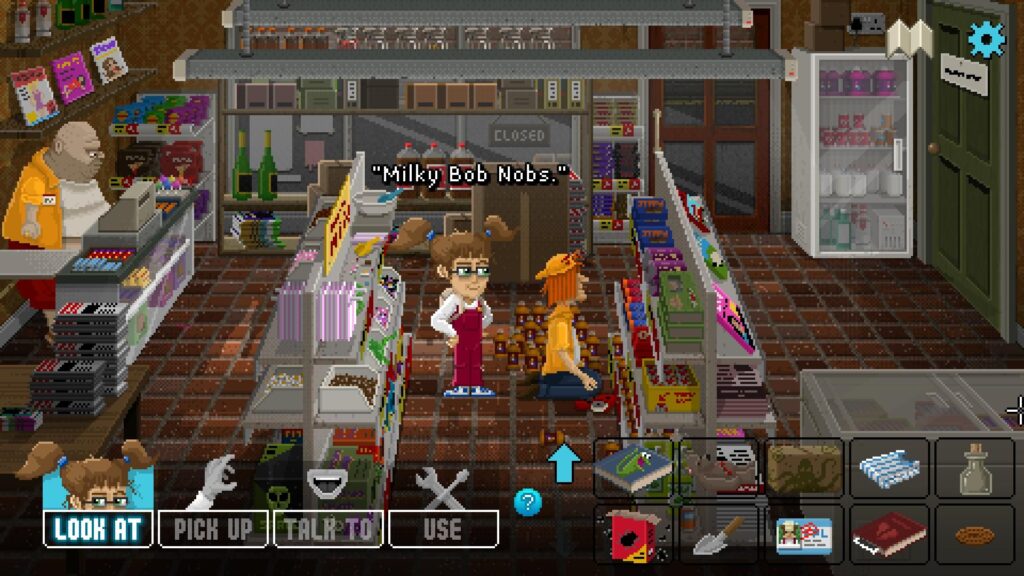
PC, Mac, Linux, iOS, Android
Lucy Dreaming is a classic old-school point-and-click adventure in pretty much every sense that phrase can inspire. Which is to say, it’s a lovingly crafted, enormously detailed, tale of whimsy and bonkers puzzles, that’s also at times infuriatingly opaque. You know, like in the olden days.
Looking like you remember the Maniac Mansion/Zak McKraken era of LucasArts games, but actually far better because those games were in CGA and you forgot about that, this is such a gloriously nostalgic experience, but with full (superb) voice acting, and a ridiculous number of hours to its bizarre story.
Lucy is a very confident child of indeterminate age, living in what might be early 90s Britain, who is plagued by repeating nightmares. Your goal, throughout this elaborate story, is to resolve the issues in her dreams, while also exploring the town of Figgington, a Yorkshire-ish community of village fetes, local shops and satanic libraries.
This eventually finds you investigating a decade-old murder, in between resolving all sorts of situations that require juggling inventory puzzles, conversations with its broad cast of characters, and darting about town convincing everyone to give you vital items. This is interspersed with Lucy’s dreams, which are themselves a whole other complicated, interweaving set of puzzles.

Lucy has a dream box that when placed next to her bed, and filled with “inspiring literature” (books on specific topics) and “companions” (cuddly toys), that then influence the nature of her dreams. So a book about crabbing, and a fluffy duckling, has Lucy dreaming she’s at a beach, occupied by sentient crabs, accompanied by an enormous floating duck. But a book of venus flytrap jokes and a worn old teddy has her at a plant-based comedy club, accompanied by a miserable full-size bear.
By mixing and matching these items, you can help Lucy find items to help her progress through her main nightmare, dreamt when her dream box isn’t placed by the bed. Each progression marks a new chapter in the game, although you can always return to older dreams to get missed items or try other combinations. Aaaaaaand, on top of all this, you can further influence the dreams with the objects on Lucy’s bedside table, like her fan.
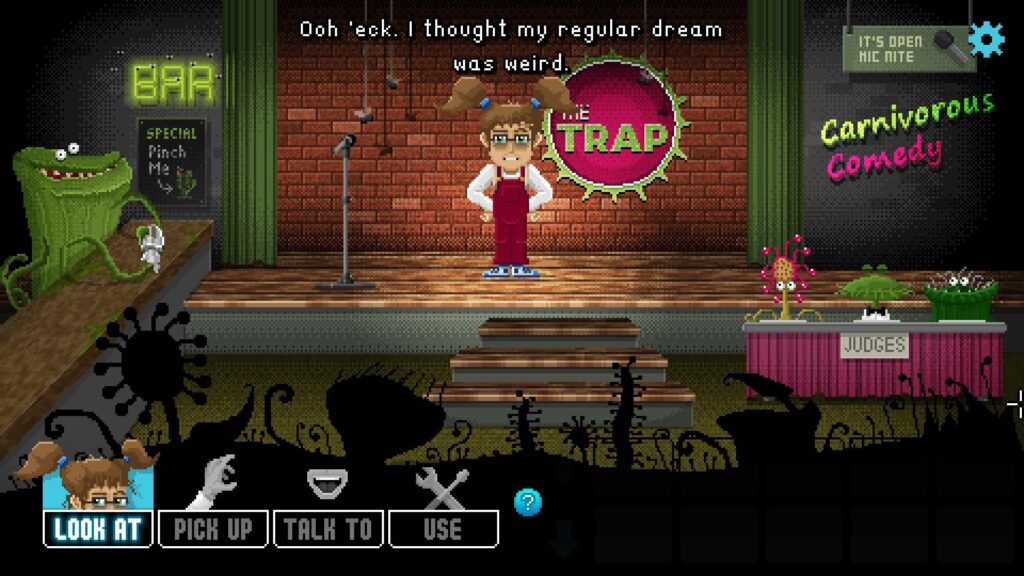
The result of all this is a superbly crafted adventure game, with a lot more going on in it than you’d usually see, but then at the same time an awful lot of complication that can see you getting stuck. Of course, getting stuck is a vital part of classic adventures, and I’ve honestly not been bothered by needing to look at a walkthrough every now and then: that’s just in keeping with the 90s format. Where I have been frustrated is when those solutions have required my noticing an object that can only be picked up in very specific circumstances, that stumbling upon would have required a ridiculous number of permutations. (I’m looking at you, wet bread from the bakery.) Far too often you’re expected to just guess to go back to an old dream, with no prompts that anything would or should have changed there.
Most exciting for me is the astonishing amount of detail. Every scene, and there are so many scenes, is crammed with items to look at, pick up, use or talk to. (The game uses a simplified version of LucasArts’ classic verb-picker.) Gags are written for everything, and it’s often worth talking to inanimate objects just to find all the most unlikely actions for which lines have been written. That this is primarily the work of one person is mindblowing. (Also, there’s a useful system in there that will highlight only the important items in any scene, if you don’t fancy a pixel hunt.)
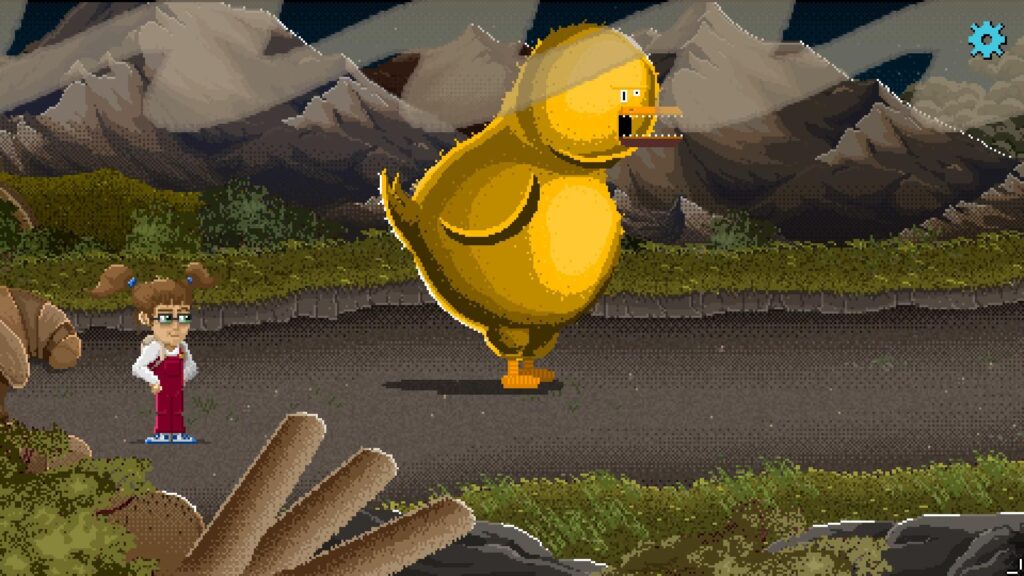
The whole thing is wonderfully British. Lucy has an almost Sarah Millican-level of squeaky brogue (although fortunately not quite that extreme), and everything is firmly rooted in parochial Englishness, rather than the usual tourist-friendly red phone boxes paraded out for in-built familiarity. Instead, here we’ve got Timmy Mallett jokes and nonchalant references to pre-installed rain for village fetes. And just like any American adventure that doesn’t think to spoon-feed its references for overseas players (think Sam & Max Hit The Road), anyone who’s not British will feel included simply by its lack of patronising inclusiveness.
It’s also packed with innuendo, the “enormous organ” sort of thing, which I’d say it perhaps didn’t need. Still, it still makes me smirk here and there. The one thing I really don’t understand being included is the swearing. The game could have been family-friendly were it not for the occasional “shites” and allusions to stronger, which don’t really add anything, and rather pointlessly cuts off a huge potential audience. It’s no big deal, but an odd choice. I’ve since learned the game has an option to remove the swears! Silly me.
It has a rushed ending, relying on a hefty expository dump, and then a very abrupt stop. It feels very weird, given the calm and methodical pacing of the rest of the game, especially given the severity of its final reveals. And again, that’s a shame, but as an advocate of “the experience of the journey is more important than the ending,” (see: life), my experience with Lucy Dreaming was primarily a very positive one.

There’s so much love and detail poured into Lucy Dreaming. That this was written and drawn and developed by one guy, Tom Hardwidge, is mindblowing. This is an enormous game, both in terms of length and sheer detail. I thoroughly recommend you give it a look.
- Tall Story Games
- Itch, Steam, iOS, Android
- £16/$20
- Official Site
All Buried Treasure articles are funded by Patreon backers. If you want to see more reviews of great indie games, please consider backing this project.




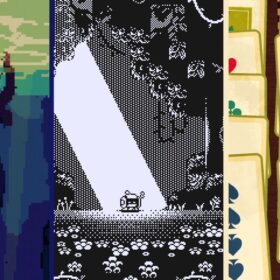



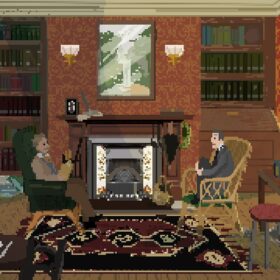




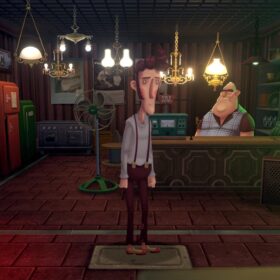
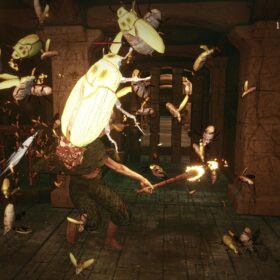

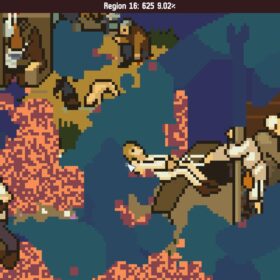





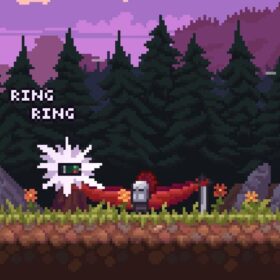

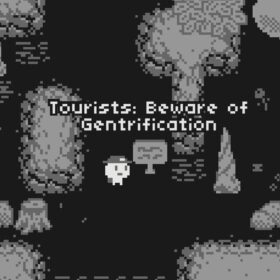


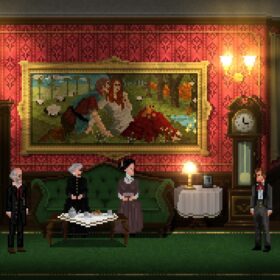

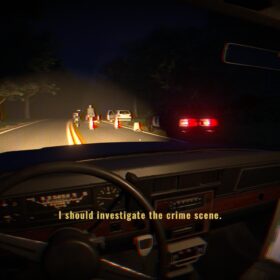

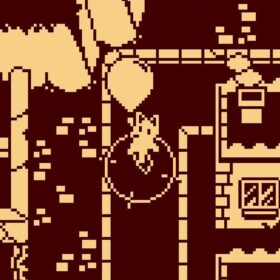
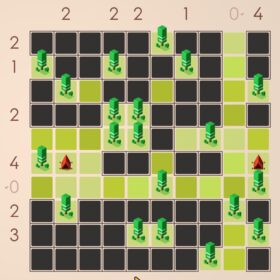




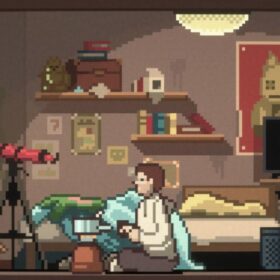
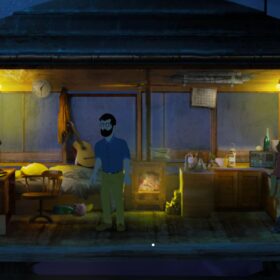

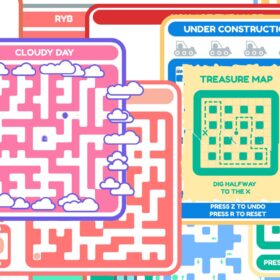

It’s probably somewhat pedantic, but visually this reminds me much more of P&C adventures such as Simon the Sorcerer than the Lucasfilm Games titles of the Maniac Mansion/Zak McKracken era. (By the way: didn’t these already support EGA, which is a far cry from the neon nightmares of CGA?) The closest we have to a modern-day aesthetic equivalent to Maniac Mansion would be Thimbleweed Park, as far as I’m concerned, which has the same kind of animations and big-headed proportions, by and large, feeling like a missing link between McKracken and the original Monkey Island
Actually, having rewatched the trailer, I see the Lucasfilm Games echoes as well (more so in motion than on the screenshots). Which kinda makes my original post mostly irrelevant. 🙂
If parochial Englishness was the goal, then I guess I’d reluctantly argue that the innuendo probably is essential…
…struggling to speak a single thing without one of my brothers-in-law doing an “oooh-matron” eyebrow-waggle because they could distort literally every sentence ever uttered by mankind into being a reference to nobs *is* very much the true English experience I feel.
I think you’re exaggerating a lot when you say Lucy Dreaming can be as opaque as old-school adventure games. The “classics” (okay, classics) had plenty of moments where the only reasonable reaction was “How was I supposed to figure that out?” In LD, there are hints for everything (in addition to Lucy’s diary), and, in my subjective opinion, there are only 2-3 puzzles in the whole game where the game is too subtle with its hints for its own good. You have successfully spoiled one of those puzzles. I’m not sure if you think that’s your trademark, inserting a spoiler in every article you write, I think it’s just careless writing and a lack of respect for the reader.
The dreaming mechanic sounds fascinatingly complex. Looking forward to picking this one up, weak ending or not.